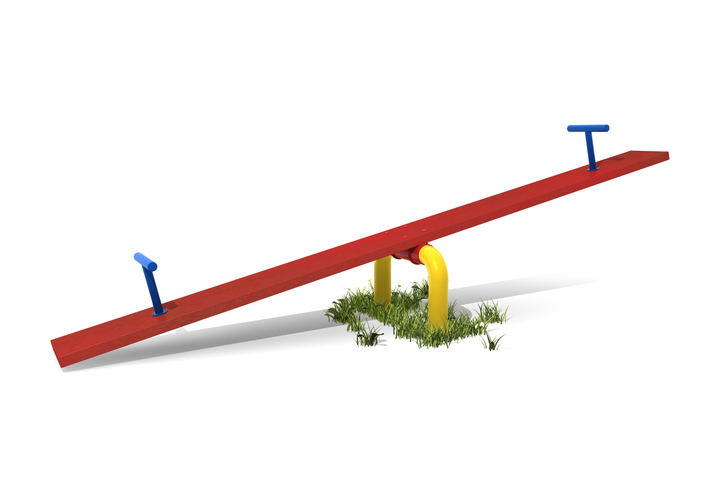CAS meetings, research and publications have been featuring the physical aspects of climate risk for many decades. This includes studying the frequency and severity of all major weather peril events; the increase in exposure from more homes and businesses being built in harm’s way; as well as efforts to strengthen homes, businesses and infrastructure to better withstand weather events.
In addition to physical risk, society is increasingly drawing attention to litigation risk — arising from not considering or responding to the impacts of climate change — and its potential impacts on insurer’s profitability and financial strength. The second general session of the 2022 CAS Spring Meeting explored climate-related litigation risk through both the insurance and reinsurance lenses: types of cases, risk drivers and potential impact on reserves of different climate-related scenarios.
Both presenters earned their Juris Doctor and have many years of experience with climate litigation. Tim Fletcher is Gen Re’s VP and senior emerging issues specialist. Fletcher’s presentation focused on the current litigation environment around climate risk. Robin Wilkinson is Verisk’s SVP and managing director of casualty analytics. Wilkinson’s presentation focused on modeling for climate litigation risk given the limited history, yet significant exposure for the insurance industry.
Fletcher started the session with an overview of active climate change contribution suits. The litigation defendants have been the “carbon majors” — defined as the 100 or so largest producers of crude oil, natural gas and cement. They include multinational energy producers such as Chevron, ExxonMobil and Shell. A 2017 study estimated these companies produce 71% of greenhouse gas emissions. Climate litigation to date has been based on precedents from the opioid epidemic, with causes of action, such as public and private nuisance, failure to warn, design defect, trespass and negligence.
The ultimate outcome of climate-related litigation will depend heavily on whether the cases are tried in state or federal courts.
The allegations have been based on three primary climate change-related injuries resulting from carbon major conduct: sea-level rise and associated impacts, increased frequency of severe and extreme weather, infrastructure damage and public illnesses.
To win climate-related litigation, plaintiffs must meet all of the following conditions:
- Prove that emissions (in aggregate) affected the Earth’s climate.
- Prove that emissions (in aggregate) caused specific harm.
- Identify and distinguish specific emissions of many emitters.
- Show that specific defendant’s emissions caused harm.
The ultimate outcome of climate-related litigation will depend heavily on whether the cases are tried in state or federal courts. Plaintiffs initially filed lawsuits with state courts, but carbon majors fought to have them moved to federal courts. After a protracted battle that included involvement by the United States Supreme Court, these cases are now being remanded back to the various state courts in which they originated. This development represents a significant game changer because state courts are perceived as being far more receptive to the plaintiffs’ arguments than their federal counterparts. In either forum, carbon majors and their insurers will incur mountainous legal costs, regardless of case outcome. In projecting where and how the litigation might turn, Fletcher posited that climate change may be more considered a problem of capitalism, in that it represents an externality created by market economies that consume natural resources while concurrently creating wealth and raising living standards.
Wilkinson then shared her perspective on the direct and indirect liability exposure for the insurance industry. The most impactful direct exposure is liability for contributing to sea-level rise. To win this argument requires attribution science, which is how we decide who caused how much of the damage. This is complicated by the reality that sea-level rise is surprisingly inconsistent by geography. For now, Verisk foresees low probability of liability for contributing to climate change, given the many legal and procedural hurdles, but very high severity, with significant defense costs whether the suits are won or not, especially if companies beyond the carbon majors are drawn into the litigation.
She discussed one aspect of indirect climate litigation exposure being the liability for failing to prepare or mitigate against known and foreseeable risks. She shared multiple examples of natural perils that climate change may be impacting, all of which could produce high-severity liability losses:
- Utilities such as PG&E in California have already been found liable for causing catastrophic wildfires. Could utilities and other industries expect to face increasing litigation as a changing climate heightens the risks of more frequent and more severe fires?
- Could residential developers be found liable for building communities within the wildfire urban interface without taking sufficient resilience measures, such as building homes far enough apart, using fire-resistant roofing and siding or placing flammable vegetation too close to residences?
- Could more energy companies be found liable for pollution events following natural disasters, as happened after Hurricane Katrina, if natural disasters become more frequent and more severe?
- Could there be increased risks of building collapses or failures along the coasts if sea-level rise might worsen the corrosion of building foundations?
She then shifted to an additional indirect climate change liability exposure: corporate liability for misleading disclosures and statements. Even if a public company attempts to responsibly manage its climate risk, Wilkinson and Fletcher agreed that companies may experience lawsuits, securities class actions and regulatory actions when their actions deviate from forward-looking statements the company has shared publicly. Wilkinson shared that Arium has developed models to help insurers estimate both these potential indirect impacts of climate change as well as the direct impacts on their liability portfolios.
Fletcher shared more details about this new trend of securities and consumer-protection suits. Plaintiffs must show that a carbon emitter’s representations deceived (or could have deceived) an investor, known as greenwashing. Further, the plaintiffs assert economic harm resulting from the carbon majors lack of candor as to how their activities have contributed to the climate crisis. Suits like this have already been brought by several states (e.g., Minnesota, Connecticut) and municipalities (e.g., Hoboken, New Jersey and Charleston, South Carolina) against different carbon majors. Third-party litigation funding, a key contribution to social inflation for other types of insurance liability, is also seen as contributing to climate risk litigation.
A next chapter of climate litigation risk could include expansion beyond carbon majors— to the many other industries that may contribute to climate change, like commercial trucking, engine manufacturers, mining and fertilizer manufacturers. If and when these suits arise, a number of coverage issues will emerge. These include determination of coverage trigger (injury-in-fact, exposure, manifestation and continuous trigger), as well as coverage defenses (expected or intended loss, loss in progress and potentially pollution exclusions). Further, these suits will likely pose same coverage issues as seen with previous mass torts, such as asbestos, silica and tobacco.
While the probability of high liability losses for climate change contribution seems low, we need to be prepared for potential significant impacts if climate litigation proceeds. At minimum, we could expect increased defense costs as plaintiffs explore the breadth of potential liability risks before us. The industry also needs to be prepared for the indirect risks from climate change that may materially impact liability lines, even if contribution litigation stalls in the courts.
Dale Porfilio is the chief insurance officer for the Insurance Information Institute.













